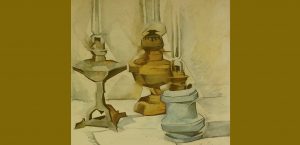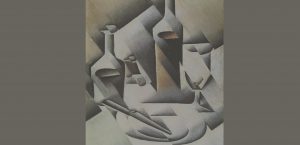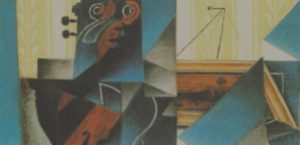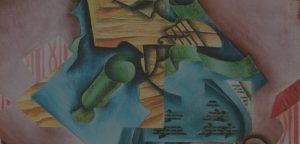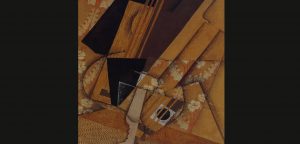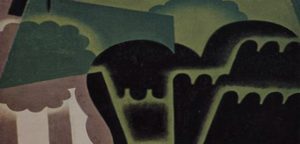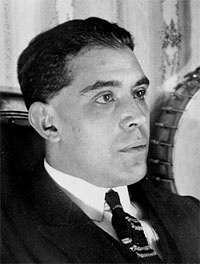Juan Gris was born on the 23rd of March in 1887 in Madrid, Spain.
1887 - 1927
Juan Gris
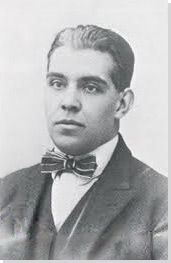
description
A Spanish artist and sculptor, art theorist, one of the founders of Cubism, stands alongside P. Picasso and G. Braque.
Jose Victoriano Carmelo Carlos (the name that he received when he was born) was the thirteenth child in the family of wealthy merchant Gregorio Gonzalez. The boy received his first art education in Madrid at the school of fine and applied art. From 1904, Gris took private painting lessons from Jose Moreno Carbonero, who was a highly educated but very traditional painter. The artist earned his first money, illustrating humorous essays in magazines.
Juan Gris is an outstanding figure of European art of the first half of the twentieth century, with his highly intelligent painting that laid the foundation for Surrealism, Dadaism and pop art. Despite a rather short life, the artist managed to create a new turn in the development of Cubism, becoming the founder of its synthetic direction and a pioneer in the collage technique. A member of the Parisian group of artists known as the “Ecole de Paris”, Gris participated in the exhibitions of the Salon of Independent in Paris, the Sturm Gallery in Berlin, the Dalmau Gallery in Barcelona and many others. In addition to paintings, the artist created scenery and costumes for the ballet productions of Sergei Diaghilev, as well as illustrated the books of his friends: G. Apollinaire, P. Reverdy and V.Udobro. Works of the artist impacted not only the development of painting, but also sculpture, architecture and design in Europe and the United States of America.
Key ideas:
– Starting his career as an illustrator and cartoonist, Juan Gris chose his creative path without hesitation. Once acquainted with the works of Cubists Picasso and Braque, he became a loyal follower of this art movement, later changed the vector of its development and created a new concept in the visual arts – “synthetic cubism.”
– Depicting objects from different angles, dividing and reconnecting their parts, the artist, unlike his fellow Cubists, always tried to create a whole image, where different elements and materials form a single harmonious composition. Gris depicted objects less distorted, simple and recognizable at first sight, making abstract art understandable even for the uninitiated spectator.
– Most of the artist’s paintings are still lifes. Working with fixed objects, the artist could freely experiment with the form and perspective: separate and join, cut and paste, add various textures and even clippings from newspapers.
– Juan Gris was an unsurpassed master of collage, one of the first in this movement. He put entire pages of newspapers and magazines directly on the canvas, creating a composition diverse not only in color and form, but also in texture. He also created several outstanding portraits, the most famous of them became the portrait of Pablo Picasso, painted in 1912.
– The artist paid much attention to color in his works. His colors are darker and more saturated than those of Picasso and Braque, bear a certain logical meaning and emphasize the overall dynamics of the canvas.
– Gris characterizes his painting as «a variant of a planar, colored architecture», aimed at the active interaction between the artist and the outside world. Many works by Juan Gris, especially the late still lifes, are recognized by critics as the most vivid masterpieces of Cubism, its conditional “top.”
1887
1906
1910 - 1913
1913
1914 - 1918
1919
1922 - 1924
1925 - 1927
1927
The birth of the artist
He moved to Paris
At the insistence of his friends, he moved to Paris, where he settled in the famous studio complex Bato Lavoir. Here he was in the center of the Parisian avant-garde art, met and became friends with Picasso, Apollinaire, Jacob, Braque, and Gertrude Stein. To earn a living, he also drew cartoons and humorous illustrations for several Parisian editions.
Gris in many ways imitated the style of Picasso and Braque
Started seriously painting. In his first works, Gris in many ways imitated the style of Picasso and Braque, with whom he worked in the village in the foothills of the Pyrenees. However, very soon individual traits characteristic of the artist’s further work (including the use of non-standard materials) began to appear in his painting. For the first time, the artist took part in the exhibition of the Salon of Independent, where he presented the work “Dedication to Picasso”.
Cubism
Having started working in the style of synthetic cubism, which became his main method, he participated in several exhibitions in Barcelona, Berlin and Paris. The art of Gris was noticed by his colleagues and critics. He signed a long-term contract with an art dealer to sell his work. The artist began to widely use various textures in his works and work in the technique of collage.
He became interested in sculpture
During the First World War, he lived mainly in Paris. Since his art dealer was forced to flee to Switzerland, the artist was left without a livelihood and was able to continue to work thanks to the help of Picasso, Matisse and Stein. After meeting Jacques Lipschitz (1917), he became interested in sculpture. Due to the bombing of Paris, Gris and his wife, Josette, went to Beaulieu-les-Lotch, where they stayed from April to December 1918. In November of the same year, the artist returned to the capital of France.
The large personal exhibition of Juan Gris
At the gallery of Leones Rosenberg, a large personal exhibition of Juan Gris took place. 50 of his works, created from 1916 to 1918, were presented at the exhibition. In 1920, the artist took part in the Salon of Independent, as well as in exhibitions held in Geneva, Dusseldorf, Brussels, Prague and Amsterdam.
Sergei Diaghilev invited him to create scenery and costumes for his ballet
Having overcome a serious illness, the artist was able to continue his work. Sergei Diaghilev invited him to create scenery and costumes for his ballet, to which Gris replied with consent. The artist’s cooperation with the Russian choreographer lasted more than two years.
The master took part in several other exhibitions
During the last two years of his life, the master took part in several other exhibitions, created illustrations for Gertrude Stein’s book «The Love Story».
The death of the artist
He died on the 11th of May in 1927 in Boulogne-sur-Seine, France.


